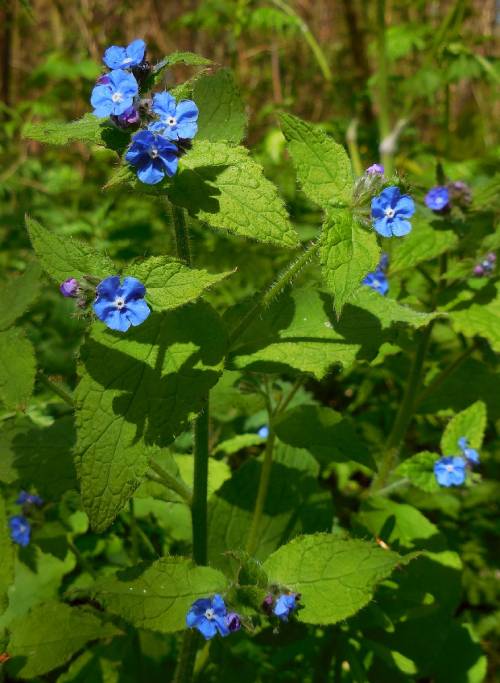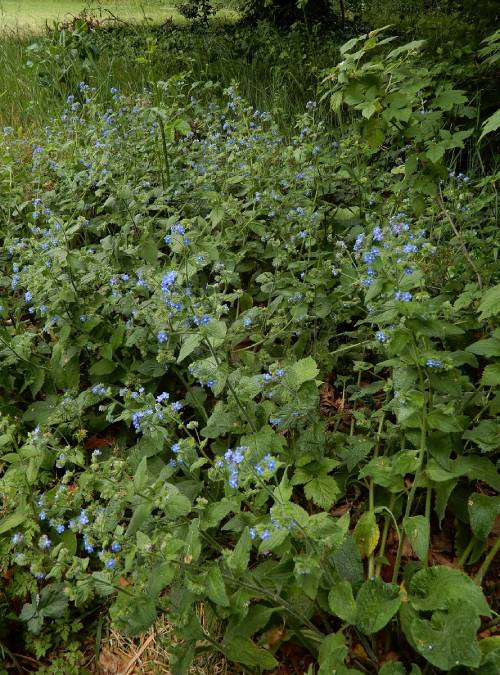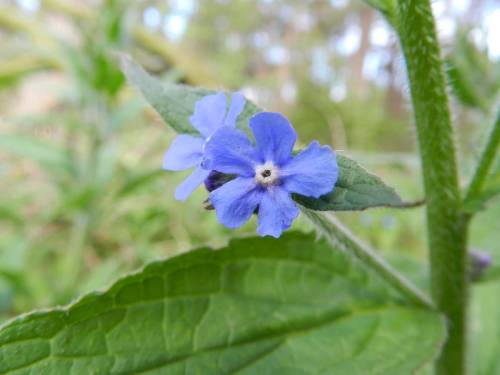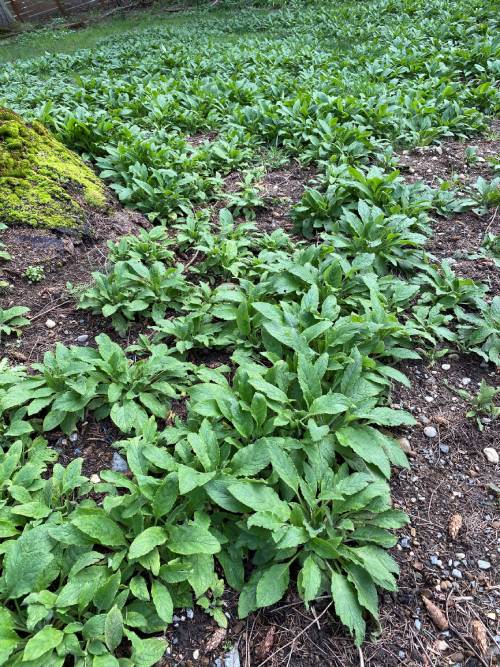Green alkanet identification and control
Information about the noxious weed green alkanet. Green alkanet is also known by its scientific name, Pentaglottis sempervirens.
About this weed
Green alkanet is a non-regulated Class C noxious weed. This means control is not required, but is recommended, and new plantings are discouraged.
Green alkanet is known as Pentaglottis sempervirens and it is in the forget-me-not family. It is also known as evergreen bugloss or evergreen alkanet. Its native range is in southwestern Europe. It is reported from the lowlands of British Columbia south to California.

Why it's a problem
Green alkanet is quick to grow, spread, and difficult to remove. It is also well adapted to warm climates meaning with the changing climate it has the potential to become an even bigger problem in our landscapes.
Plant description
Green alkanet grows in partial to fully shaded sites in garden settings, woodlands, and disturbed areas such as roadsides. It is an herbaceous perennial (not woody, 2+ year life cycle) that can grow over 3 feet high and has deep thick roots.
Much of the plant is covered in stiff hairs. The leaves are long, and egg shaped. They have a wide base and pointed tip. Leaves on the stem are alternately arranged (staggered, without a pair) and become smaller and more directly connected to the stem going upward.
Flowers grow in loose clusters April - July. Flowers are 0.5 inches in diameter with five blue petals and a raised white center. Green alkanet reproduces by seed with 4 nutlets per flower.




Be aware of look-alike plants
It may be confused with other plants in the Boraginaceae family including these other regulated weeds: annual bugloss, viper’s bugloss, and common bugloss.
These three have longer and more slender leaves than green alkanet and the flowers are arranged in a spiral or coiled and unfurl as they mature.
When in doubt, take photos and share them with us or report them on iNaturalist or EDDMapS.
What to do if you find it
Property owners in King County are not required to control green alkanet. The King County Noxious Weed Control Board encourages property owners to remove it where possible and avoid introducing it to new landscapes.
Consult your local master gardener group or try the Garden Hotline for tips and tricks on managing garden weeds.
Control methods
We recommend using a combination of methods to control noxious weeds. In areas with few weeds, it is important to act quickly before they become harder to control. Make a long-term plan as it often takes several years to get rid of most weeds. Start in the least infested areas first and then move into more heavily infested areas.
Manual control
Hand pull or dig out the plants. Take care to remove all or as much of the taproot as possible. This is easiest when the soil is moist. Fragments left in the soil can resprout. If the plants already have flowers or seeds, cut and bag them to go into the garbage. After removal, monitor the area for seedlings.
Chemical control
Large populations can be managed with a selective broadleaf herbicide.
Stay safe when using herbicide:
- Always read the label before use.
- Wear a long-sleeved shirt, long pants, shoes, and eye protection.
- Follow state and local regulations.
Disposal instructions
Plant may be composted after soaking in water to rot for at least a week.
Noxious Weed Disposal - Washington State Noxious Weed Control Board

 Translate
Translate